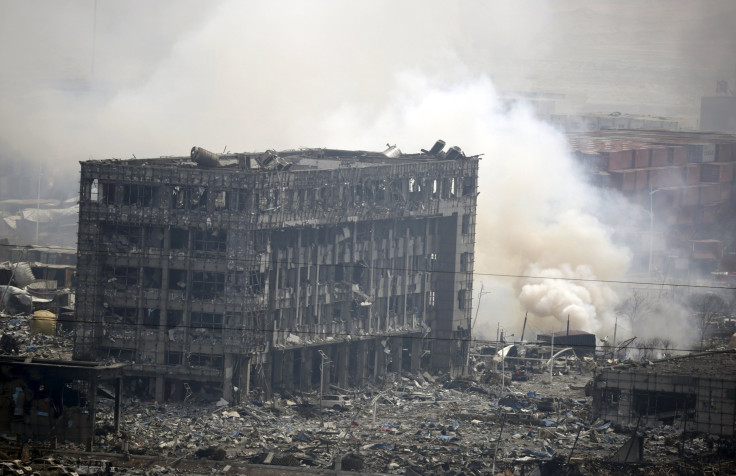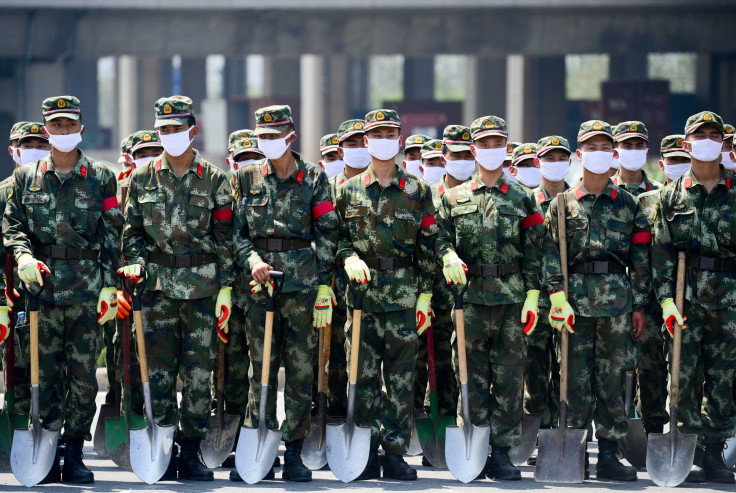Tianjin Explosions: Rescue Workers Tackle Toxic Chemicals, As Greenpeace Warns Of Health Risks

Chinese authorities are working to determine what caused the blasts in the port city of Tianjin Wednesday, with teams of military nuclear and chemical specialists working at the scene of the blasts, and rescuers attempting to remove toxic substances that could pose health risks to the surrounding population.
Wednesday's blasts have so far killed at least 50 people and left over 700 injured, 71 of them critically, according to state-run news agency Xinhua. Of the dead, 17 are firemen who were responding to the blasts. Dozens of other firemen are still missing, raising the likelihood that the death toll will increase further.
China's state-run People's Daily newspaper reported Friday that rescue workers were beginning the task of cleaning up hundreds of tonnes of toxic substances, which it said included potassium nitrate, sodium cyanide and hydrogen peroxide. The report added that chemicals from the site had been found in the sewage system.
The Chinese branch of environmental activist group Greenpeace warned Thursday that chemicals from the blasts could pose health risks to residents, if transferred into the air or water systems.

In a statement, cited by CNN, the Chinese branch of environmental activist group Greenpeace said it feared that the danger was not over.
"We are concerned that certain chemicals will continue to pose a risk to the residents of Tianjin," the statement said.
"According to the Tianjin Tanggu Environmental Monitoring Station, hazardous chemicals stored by the company concerned include sodium cyanide (NaCN), toluene diisocyanate (TDI) and calcium carbide (CaC2), all of which pose direct threats to human health on contact. NaCN in particular is highly toxic. Ca(C2) and TDI react violently with water and reactive chemicals, with risk of explosion. This will present a challenge for firefighting and, with rain forecast for tomorrow, is a major hazard," Greenpeace said.
City authorities have set up 17 monitoring stations for air, and another five for water, Xinhua reported. Three sewage outlets to the sea have been closed, said Wen Wurui, head of the city's environmental protection bureau, at the press conference.
Wen added that the blast will not affect the air quality in Beijing, about 120 kilometers northwest to Tianjin.
Executives at the Tianjin Dongjiang Port Rui Hai International Logistics Co., which owned the warehouse where the blasts took place, have been taken into custody, according to state media reports.
The Tianjin Maritime Safety Administration said the company violated packaging standards during a safety inspection two years ago, Reuters reported.
Of 4,325 containers that were checked, five failed the inspection because packaging was sub-standard, according to a report posted on the administration's website in January 2014.
© Copyright IBTimes 2024. All rights reserved.






















